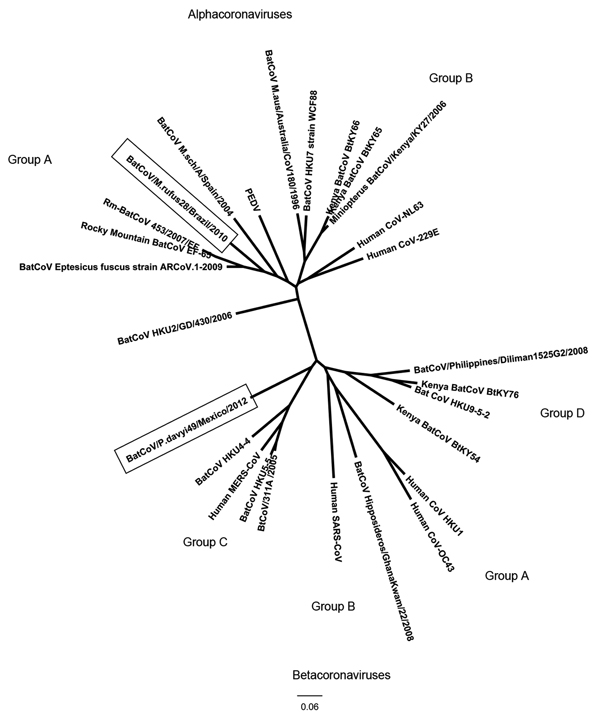Volume 19, Number 10—October 2013
Letter
Novel Bat Coronaviruses, Brazil and Mexico
Figure

Figure. . . Phylogenetic tree showing relationships based on 412-nt and 439-nt sequences of a conserved region of gene 1b of BatCoV/Molossus rufus28/Brazil/2010 (alphacoronavirus) and BatCoV/Pteronotus davyi49/Mexico/2012 (betacoronavirus) to other known coronaviruses. Sequences were aligned by using ClustalW (www.clustal.org/), phylogenetic analyses were conducted by using the neighbor-joining method and BioEdit (www.mbio.ncsu.edu/BioEdit/BioEdit.html), and trees were constructed by using FigTree version 1.4.0 (http://tree.bio.ed.ac.uk/software/figtree/). Boxes surround the novel alphacoronavirus detected in Molossus rufus and M. molossus bat specimens from São Paulo state in southeastern Brazil, and the novel betacoronavirus detected in a specimen from a Pteronotus davyi bat from Jalisco state in midwestern Mexico. GenBank accession numbers aree AB539081.1, DQ648808.1, GU065420.1, HM211099.1, EF065512.1, EF065512.1, JX869059.2, GU065398.1, EF507794.1, FJ710054.1, JX537914.1, EF544566.1, EU834956.1, EF203064.1, GU065410.1, HQ728484.1, GU065409.1, HQ184049.1, DQ666339.1, HQ336974.1, DQ445911.1, KC210147.1, AY278741, NC_002645.1, and NC_005147.1. PEDV, porcine epidemic diarrhea virus. Scale bar indicates nucleotide substitutions per site.
1These authors contributed equally to this article.